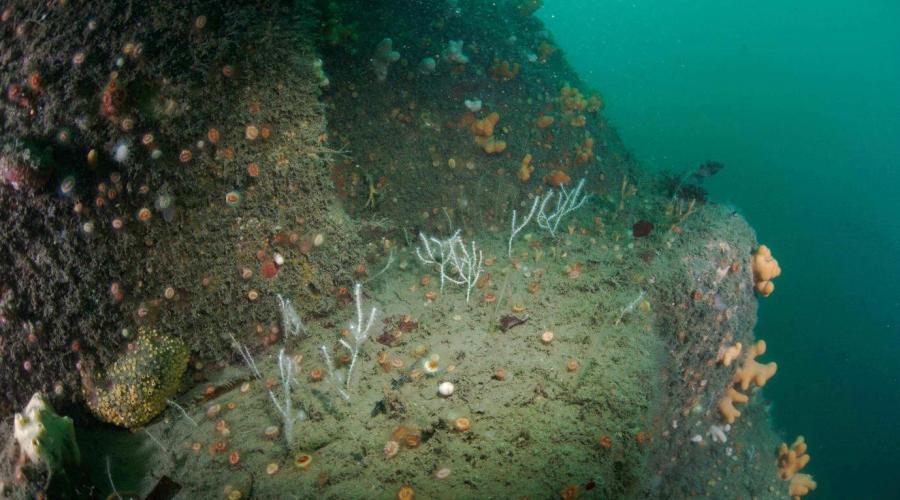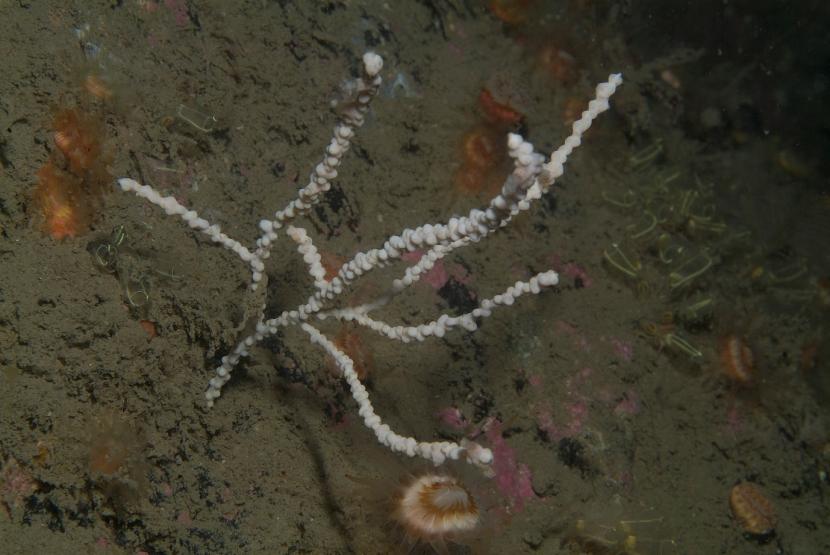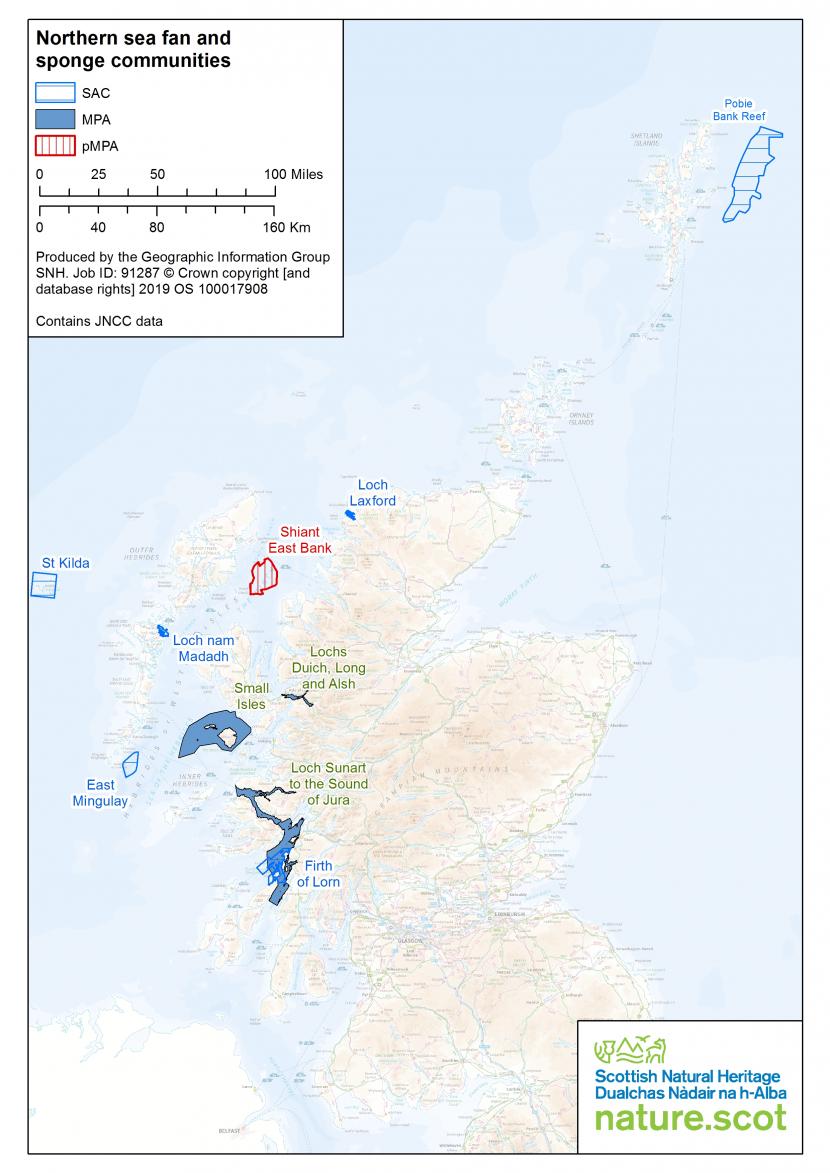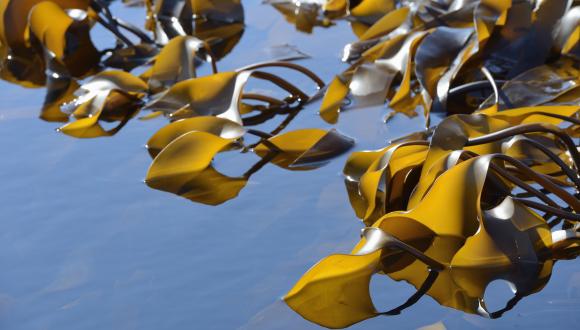
North sea fan and sponge communities
Growing on rocky substrates on Scotland’s west coast, northern sea fan and sponge communities form delicate and colourful seabed habitats where many species thrive.
Northern sea fan and sponge communities are a Priority Marine Feature in Scotland’s seas. In Scotland these communities are thought to be at the southernmost extent of their range and have global importance as Annex I ‘reefs’ on the EU Habitats Directive.
Northern sea fan and sponge communities provide:
- Habitat for many other species, such as the nationally rare sea fan anemone Amphianthus dohrnii
- Waste breakdown and the detoxification of the surrounding water and sediments
- Important larval and gamete supply to other areas
Northern sea fan and sponge communities are restricted to the west coast of Scotland in UK waters. These communities grow on bedrock, boulders and cobbles in areas with sufficient water movement to prevent smothering by settling of fine sediments but sheltered from excessive wave action. The northern sea fan (Swiftia pallida) and cup corals (Caryophyllia smithii), species which characterise the habitat, are predominantly found between depths of 20 m - 50 m, whilst sponges are more common in the deeper waters below. Rocks and boulders are common features of the habitat, which provide shelter for squat lobsters and wrasse and surfaces for bryozoans, sea firs, soft corals (e.g. dead man’s fingers) and sea squirts to grow upon.

Threats to Northern sea fan and sponge communities
Northern sea fan and sponge communities grow best on bedrock, boulders and cobbles in fully marine conditions. As a delicate habitat it is important to protect the communities from:
- Organic enrichment – high levels of organic particulate matter is linked to a reduction in species biomass and abundance
- Physical damage – as fragile and long lived species damaged or dislodged sea fans are unlikely to recover
- Changes in local current flow – as filter feeder sea fans rely on high water flow rates to bring food and remove silt
More information on the sensitivities of Northern sea fan and sponge communities can be found at Scotland’s Feature Activity Sensitivity Tool (FEAST).
Protection of Northern sea fan and sponge communities
Northern sea fan and sponge communities are a Priority Marine Feature in Scotland’s seas and are encompassed by Annex I ‘reefs’ on the EU Habitats Directive.
Northern sea fan and sponge communities are protected in 9 locations in Scotland’s seas by a suite of Marine Protected Areas shown in the map below:
More information on the sites and how they are managed can be found at NatureScot’s Sitelink and on the Marine Scotland web pages for some sites. For a number of sites detailed survey and monitoring reports also exist.

Credit: NatureScot




